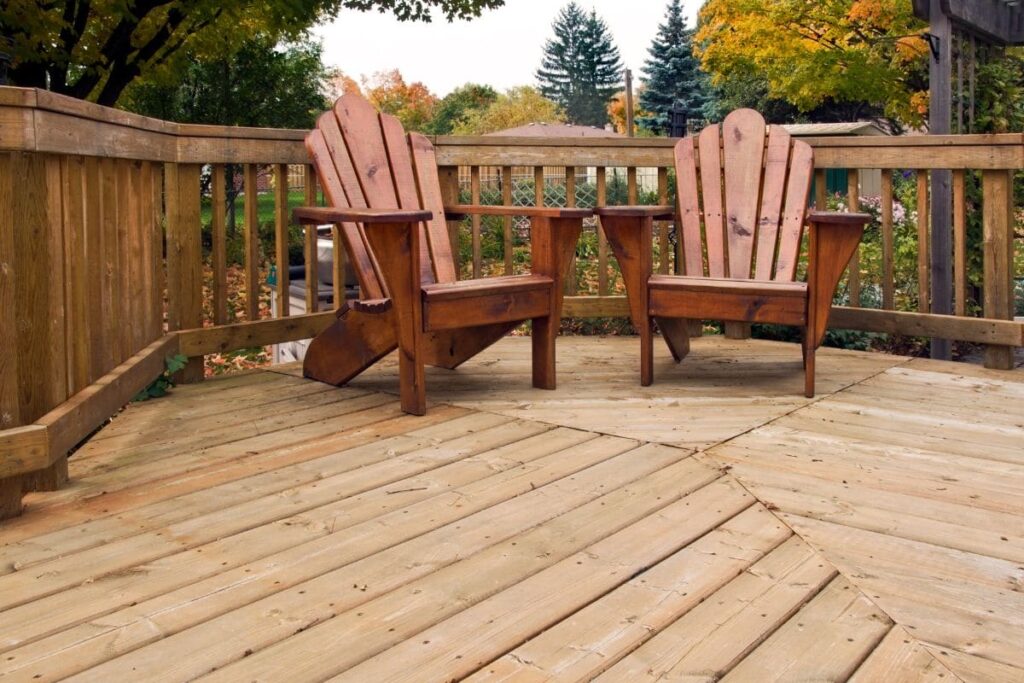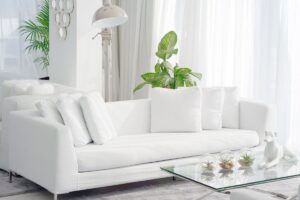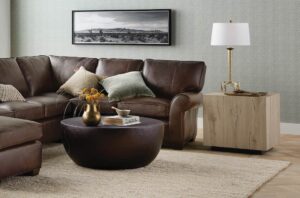Selecting the right outdoor furniture is no small task; it’s an investment that can greatly enhance your outdoor living space. So, what do you choose between Polywood vs Berlin Gardens, two industry leaders? It’s a dilemma many face, especially when both brands offer compelling features.
Both companies have a strong focus on material innovation, offering options like High-Density Polyethylene (HDPE) lumber and Marine-Grade Polymer.
Recognizing these intricacies can drastically impact the life and aesthetics of your outdoor setting. The importance of making an informed choice cannot be overstated.
History and Origin
Understanding the origins and historical contributions of Polywood vs Berlin Gardens can give valuable insights into their core philosophies and approaches to furniture-making.
It’s more than just a matter of preference; it’s about recognizing the legacy and craftsmanship that go into each piece of furniture.
Brief History of Polywood
Polywood holds the distinction of being a pioneer in the outdoor furniture sector.
Established in Indiana during the early 1980s, it was the first brand to bring the concept of using recycled plastics to manufacture HDPE lumber boards. This revolutionary idea set new standards, becoming a focal point in the outdoor furniture market.
Note: Polywood is indeed an American-made brand, which might be an important factor for consumers focusing on locally sourced and manufactured products.
Brief History of Berlin Gardens
Berlin Gardens shares similarities with Polywood in using HDPE lumber for its furniture but takes a distinct approach to sourcing and design.
The company primarily sources its poly lumber from Tangent Lumber, a premium manufacturer. This contributes to the smoother finish of Berlin Gardens furniture, setting it apart in terms of ease of maintenance.
Impact on the Outdoor Living Industry
Both Polywood vs Berlin Gardens have had a significant influence on the outdoor living market.
- Polywood led the way in using recycled plastics, contributing to both sustainability and durability in outdoor furniture.
- Berlin Gardens, although using similar materials, emphasizes comfort and style, using larger lumber sizes and hidden hardware to enhance the aesthetics.
These historical perspectives underscore the specific strengths and philosophies of each brand, making it easier for potential buyers to align their purchase with their priorities.
Material Composition
The backbone of any piece of outdoor furniture is the material from which it’s constructed. Polywood and Berlin Gardens offer robust solutions with a focus on High-Density Polyethylene (HDPE) lumber and Marine-Grade Polymer (MGP). Let’s delve into what these materials mean in the context of these two prominent brands.
Process Behind HDPE Lumber in Polywood
Polywood utilizes an environmentally friendly process that recycles plastic waste into HDPE lumber boards. This material is noted for its resistance to chemicals, colorfastness, and non-porous nature, making it highly suitable for outdoor use. HDPE lumber also has the added advantage of not fading under direct sunlight, which addresses a major concern for many buyers.
Note: For those wondering, Polywood’s HDPE lumber is indeed colorfast and resistant to UV rays.
Berlin Gardens’ Use of HDPE Lumber
Berlin Gardens also employs HDPE lumber in its furniture, but what sets it apart is the quality of the material sourced. The company procures its lumber from Tangent Lumber, a premium manufacturer, which results in a smoother finish. This smoother finish has practical implications as well; furniture made from it is often easier to clean compared to Polywood’s.
Introduction of Marine-Grade Polymer and Polystyrene
Emerging as a recent development in material science, Marine-Grade Polymer (MGP) is increasingly being used by both Polywood and Berlin Gardens. MGP is recognized for its durability and smooth finishes, often utilized in marine and boat-building applications.
| Material | Advantages | Known Issues |
|---|---|---|
| HDPE | Colorfast, chemical-resistant | None |
| MGP | Durable, allows for curved designs | Newer in the market |
| Polystyrene | Economical | Brittle, prone to color loss |
However, it’s crucial to be cautious when considering Polystyrene. Despite its affordability, it is known for its brittleness and is not recommended for long-term outdoor use.
Quality and Durability
Quality and durability often top the list of considerations for outdoor furniture. How do Polywood and Berlin Gardens fare on these fronts? Both brands invest in High-Density Polyethylene (HDPE) lumber, but the final products differ in important ways.
Properties of HDPE Lumber in Polywood
HDPE lumber is the material of choice for Polywood, known for its colorfastness, resistance to chemicals, and non-porous attributes. These properties make it not only durable but also ideal for outdoor conditions, being able to withstand the elements without deteriorating. Moreover, Polywood prioritizes consumer needs, focusing on designs that offer value without compromising on the quality of the material.
Note: HDPE lumber from Polywood does not fade in direct sunlight, addressing a common issue with outdoor furniture.
How Berlin Gardens Improves on Material Quality
Berlin Gardens takes a similar yet distinctive path. By sourcing its HDPE lumber from Tangent, a premium manufacturer, Berlin Gardens ensures a smoother finish. This is not merely an aesthetic consideration; a smoother finish also makes the furniture easier to clean and maintain. The brand places emphasis on comfort and style, using larger lumber sizes and hidden hardware, thereby elevating the final product’s quality.
Concerns About Polystyrene’s Durability
Though an option in the market, Polystyrene falls short in the quality and durability departments. It may be more affordable, but the material is known to be brittle and prone to discoloration. For these reasons, Polystyrene is not generally recommended for long-term outdoor use.
| Material | Durability Factors | Considerations |
|---|---|---|
| HDPE in Polywood | Colorfast, chemical-resistant | Trusted |
| HDPE in Berlin Gardens | Smoother, easier to clean | Premium Quality |
| Polystyrene | Economical | Brittle, discolors |
Thus, while both Polywood and Berlin Gardens offer high-quality, durable options, Berlin Gardens has a slight edge in material refinement.
Design and Comfort
When it comes to outdoor furniture, aesthetics and comfort are indispensable. Polywood and Berlin Gardens have different philosophies that influence the design and comfort levels of their products. While Polywood aims for designs that offer good value, Berlin Gardens concentrates on comfort and unique stylistic elements.
Polywood’s Focus on Value-Driven Designs
Polywood excels in crafting furniture that is not just functional but also cost-effective. Their designs might appear simple, yet they are carefully engineered to offer ease of use and practicality. For example, Polywood chairs come with a sturdy structure, easy assembly, and a range of colors that appeal to a wide demographic. Polywood chairs are indeed of high quality and worth considering for those on a budget.
Note: Polywood offers designs that are not just about appearance but also incorporate convenience for the user.
Berlin Gardens’ Emphasis on Comfort and Unique Designs
On the other hand, Berlin Gardens takes design and comfort to another level. With features such as wider seats, ergonomic curves, and a variety of finishing options, the brand caters to those who prioritize relaxation and distinctive styles. It can be said that Berlin Gardens provides an excellent offering in terms of brand quality.
Differences in Furniture Finish Quality
The finish quality also differs between the two brands. Polywood opts for a more matte finish, which is easier to maintain but might lack the visual appeal for some. Berlin Gardens chooses a semi-gloss finish that offers a more luxurious look but may require additional care to keep it in pristine condition.
| Features | Polywood | Berlin Gardens |
|---|---|---|
| Seat Width | Standard | Wider |
| Finish | Matte | Semi-gloss |
| Unique Design Elements | Limited | Available |
By examining these elements, potential buyers can determine which brand aligns more closely with their preferences in terms of design and comfort.
Sustainability and Environmental Impact
Sustainability is a critical concern for consumers in today’s society. Both Polywood and Berlin Gardens approach environmental responsibility in distinct ways. Polywood leans heavily into recycling, Berlin Gardens is selective with its suppliers, and both offer products with specific environmental benefits.
Recycling Plastic into HDPE for Polywood
Polywood has taken a proactive stance by recycling plastics into high-density polyethylene (HDPE) lumber for its furniture. This process not only reduces waste but also ensures a longer lifespan for the products. For those concerned with environmental impact, Polywood furniture is not only of high quality but also American made, adding to its appeal.
Note: Polywood’s manufacturing process has a two-fold benefit: It’s ecologically responsible and enhances the product’s longevity.
Berlin Gardens’ Supplier Choices
Berlin Gardens sets itself apart through its careful selection of suppliers who adhere to sustainable practices. The brand prefers using HDPE, which is itself often sourced from recycled materials. By scrutinizing its supply chain, Berlin Gardens ensures an environmentally responsible end product, substantiating its reputation as a good brand.
Environmental Benefits of Marine-Grade Polymer
Marine-grade polymer, often used in both brands, has its own set of environmental advantages.
These include resistance to harsh weather conditions and UV radiation, reducing the need for frequent replacements and thereby conserving resources.
Though marine-grade polymer is not widely discussed, its use in outdoor furniture should not be underestimated.
| Sustainability Features | Polywood | Berlin Gardens |
|---|---|---|
| Material | Recycled HDPE | Sourced HDPE, occasionally recycled |
| Lifespan | Long | Comparable |
| Weather Resistance | Yes | Yes |
By assessing the sustainability practices of both brands, consumers can make informed decisions that align with their environmental priorities.
Conclusion
We have dissected the major aspects that set Polywood vs Berlin Gardens apart—history, material composition, quality, design, and environmental impact.
For consumers, the decision hinges on what values matter most: Is it sustainability, comfort, design, or perhaps a combination?
As for the future of poly furniture, one thing is certain—innovation will continue to evolve, offering even better options for outdoor living.





